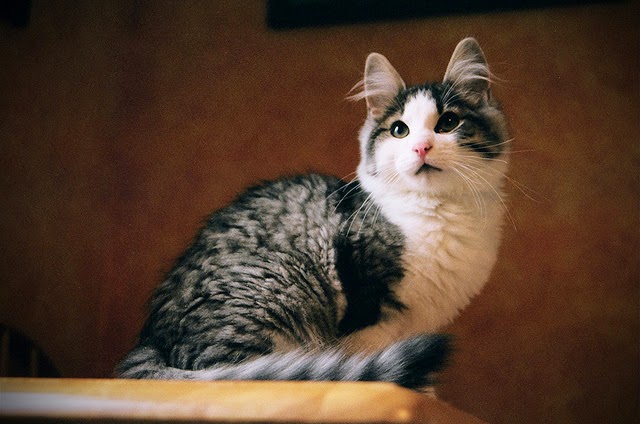So far our story has set a fairly quick pace. We’ve introduced the setting and the protagonist. We’ve introduced the protagonist’s allies and enemies. We know what the protagonist’s goal is as well as the obstacles to her achieving it. We have seen the protagonist devise a plan to make her goal a reality, act on it and fail miserably. Now it’s time to react to this failure, come up with a new plan and put it into motion.
Sequels
Now the pace is going to slow. The protagonist needs time to react to all that has happened. She needs to sit down, take a breath, regroup and reflect.
Show the protagonist’s reactions to this loss, show her emotions--or lack of them. What happened? What didn’t go according to plan? Why? Going forward, what are the options? What are the outcomes/stakes for each option?
Each of the protagonist’s allies might argue for a different course of action but, ultimately, the protagonist must choose between them or, even better, put forward a plan of her own, one that is bolder, more daring, than all the others.
In other words, now’s the time for a sequel. (BTW, for more about scenes and sequels see: Scenes, Sequels, Sequences and Acts & Jim Butcher on Scenes and Sequels.)
Scenes Like a Funhouse Mirror
Short stories often reflect the macrocosm as though in a warped funhouse mirror, speeding through certain parts--or only implying them--to dwell on others. (I think I picked the metaphor of a funhouse mirror because I’m reading Stephen King’s “Joyland.” Wonderful story.)
In my previous posts in this series I mentioned that short stories are different from novels but that they have the same important bits. And that’s true, but sometimes these important bits occur offstage: either before the story began or in the time after it ends.
For example, one of my favorite stories, Ernest Hemingway’s “Hills Like White Elephants,” is (or so I would argue) basically a sequel. There are two courses of action being discussed and the girl, the protagonist, must choose between them.
I think that, often, literary short stories are sequels. The protagonist reacts to an event that occurred before the story began and the reader tries to figure out what the event was, as well as its significance, from how it affects the characters.
A note about the structure of a short story and how it often differs from that of a longer work
The crisis of the last section (First Complication) occurred more or less at the Midpoint of our short story, though if we were writing a novel this would occur earlier at around the 30% mark.
Note that the Midpoint isn’t a point, it’s a sequence that consists of several short fast-paced scenes, each scene running into the next with little pause for reflection. In each scene the protagonist tries to achieve her goal (the story goal) and in each something happens to deflect her. (see: Try-Fail Cycles)
In this sense, a short story is condensed. Where in a novel there would be ample time between the failure of the protagonist’s first attempt and her gearing up for her main assault, this span of time is telescoped in a short story. The protagonist of a short story has to adjust to the conditions of the special world, make friends and allies--as well as enemies--in a few short paragraphs rather than chapters.
Formulate a New plan
What follows are some of the stages/events that often occur after the protagonist’s first big failure.
This list is not meant to be in any way canonical--when it comes to stories there’s no such thing--but thinking about these points has often helped me figure out why a certain part of my story isn’t working as well as I’d like.
a. Emotion
At the beginning of the sequel, show the protagonist’s emotions. Show her emotional reaction to the failure at the end of the previous scene. Is she sad? Angry?
b. Thought/Review
The protagonist reviews the situation and focuses on one or two aspects of the attempt as significant. These are the aspects the writer wishes the reader to dwell upon. This is where much of the protagonist’s character development will occur.
For example, who does the protagonist blame? Herself? Her friends? The antagonist? I've found that heroic protagonists tend to blame themselves. Especially if one of their companions is injured in her attempt to achieve her goal.
c. Anticipation/Reason
Show the protagonist anticipating what is to come. What can she do now? Have the protagonist--or her allies--think of two or three ways of achieving her goal. For each goal reveal what the outcome would be; what the new stakes would be.
d. Decision
Have the protagonist decide on a new path of action. The important bit here is that the writer clearly communicates to the reader why the protagonist picked one course of action over another.
For example, continuing my example from last time, let’s say the protagonist’s goal is to stop her grandmother’s house from being repossessed by the bank. Let's say that our protagonist comes up with these three options:
i. Go to the mob and borrow the money.
ii. Plunder the trust fund her father set up for her so she could go to college and become a doctor.
iii. Beg her cousin to let grams live with her. (The protagonist absolutely hates her cousin and the feeling is mutual.)
If the protagonist chooses (iii) then it shows the reader that she is willing to swallow her pride. That would tell us a lot about the protagonist's character. We would see that she would rather do something she absolutely hated rather than let someone she loved come to harm.
If the protagonist doesn’t choose option (iii) that also tells us something about her. For example, if she chooses (ii) then she will achieve her goal--her grams house will be saved--but she will have sacrificed both her dream and her father’s dream to make it happen.
The question is: How much does the protagonist’s pride mean to her? Is she willing to give up her dream to save her pride?Her decision will tell us a lot about her. This, right here, is the nuts and bolts of character development.
e. Action
Show the protagonist begin to act on her new plan. For example, let’s say that the protagonist has chosen to save her grans house by plundering the trust fund her father set up for her. At the end of the sequel we could show her getting in her car and leaving for the bank.
Next time we’ll look at the Major Setback and talk more about how the second half of a story differs from the first. Cheers!
Photo credit: Untitled by Thomas Leuthard under Creative Commons Attribution 2.0.











